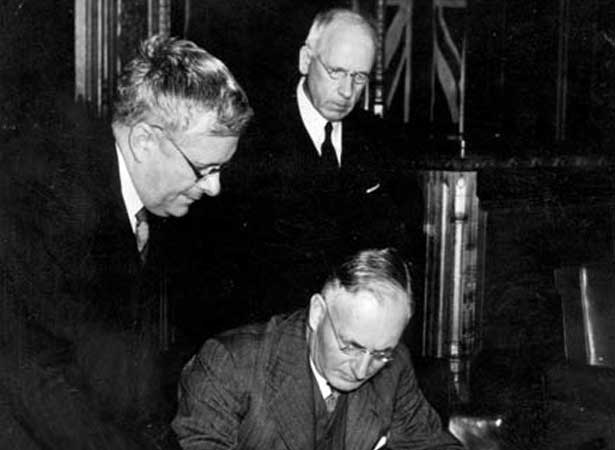
In the wake of Japan’s expansion across the Pacific Ocean during the Second World War, the New Zealand and Australian governments saw the value of working together more closely to enhance their joint influence.
The Australia–New Zealand Agreement (‘Canberra Pact’) was an undertaking by the two countries to co-operate on international matters, especially in the Pacific. In particular they agreed to:
- establish a framework for consultation on matters of common interest
- assert their right to be involved in setting peace terms and in the creation of any post-war international organisation
- the creation of a regional defence zone stretching across the Pacific from Australia to Western Samoa and the Cook Islands
- support the principle of trusteeship for the remaining Pacific island colonies
- set up a regional commission to advance economic, political and social development in the ‘South Seas’.
The Canberra Pact was received unenthusiastically by the United Kingdom and with hostility by the United States. The British saw it as underlining their loss of influence in the region while the Americans, who were now the dominant power in the Pacific, were angry that they had not been consulted. Even its promise of closer co-operation between Australia and New Zealand was largely unfulfilled. But the two countries were closely involved in the creation of the United Nations, and a South Pacific Commission was set up in 1947.
Read more on NZHistory
Treaties and alliances – The Cold WarPolitical and constitutional timeline – Political and constitutional timeline
External links
How to cite this page
'New Zealand and Australia sign the Canberra Pact', URL: https://nzhistory.govt.nz/nz-and-australia-sign-the-canberra-pact, (Ministry for Culture and Heritage), updated 24-Sep-2020
